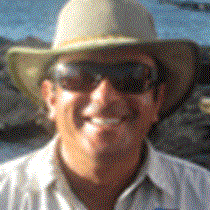Bartolomé
The National Geographic Islander anchored today near the famous Bartholomew’s Pinnacle Rock. The sky was completely overcast, 58 degrees was the air temperature, while the surface water temperature was a chilling 66F. It’s cold on the Equator!
These are ideal conditions for the Galápagos penguin, which inhabits this place, and we hoped to see it during our morning activities.
We start the day with a dry landing, and a hike that takes us over the hills of this eroded volcano. On our way up, we enjoy the sighting of several spatter cones spread all over the island. These are parasitic cones which have allowed the lava to come out when the volcano was active, leaving an impressive sighting of its formation.
After returning from the island on board our Zodiacs, we enjoyed of a nutritious breakfast that prepare us for our snorkeling activities.
This was our first opportunity to snorkel on our expedition, and the calm water of the bay near the Pinnacle is the perfect setting for us to start our underwater experience. We encountered several species of fish: yellow-tailed damsel, surgeonfish, and sergeant majors, amongst others, as well as the famous Galápagos sea lion and penguins!
Once on board the National Geographic Islander, we continued our navigation to the island of Santiago.
Here we had a great chance to kayak along the rugged shoreline formed out of lava flows, where we encountered a few turtles and sea lions. In the distance we observed the impressive sighting of Isabella’s volcanoes. In the meantime, the rest of our guests explored the underwater realm, discovering how the Pacific green sea turtle feeds out of algae in the shallow waters of Puerto Egas, our landing site.
Here we walk in the intertidal shore, composed of compacted ash and volcanic lava flows, as well as collapsed lava chambers that have formed grottos, where we find the second species of sea lion that lives in the islands, the Galápagos fur sea lion. This animal arrived with the Humboldt Current from Patagonia, the southern tip of South America. Together with the Chilean-Peruvian penguin, Sphenicus humboldti, and both evolved in their local species. More wildlife is found here, and as we walk we find large numbers of marine iguanas, striated herons fishing in the tide pools, brown noddy terns and pelicans fishing of the cost, while sea lions have started to give birth to their pups and we find them sunbathing after their first days of life!




